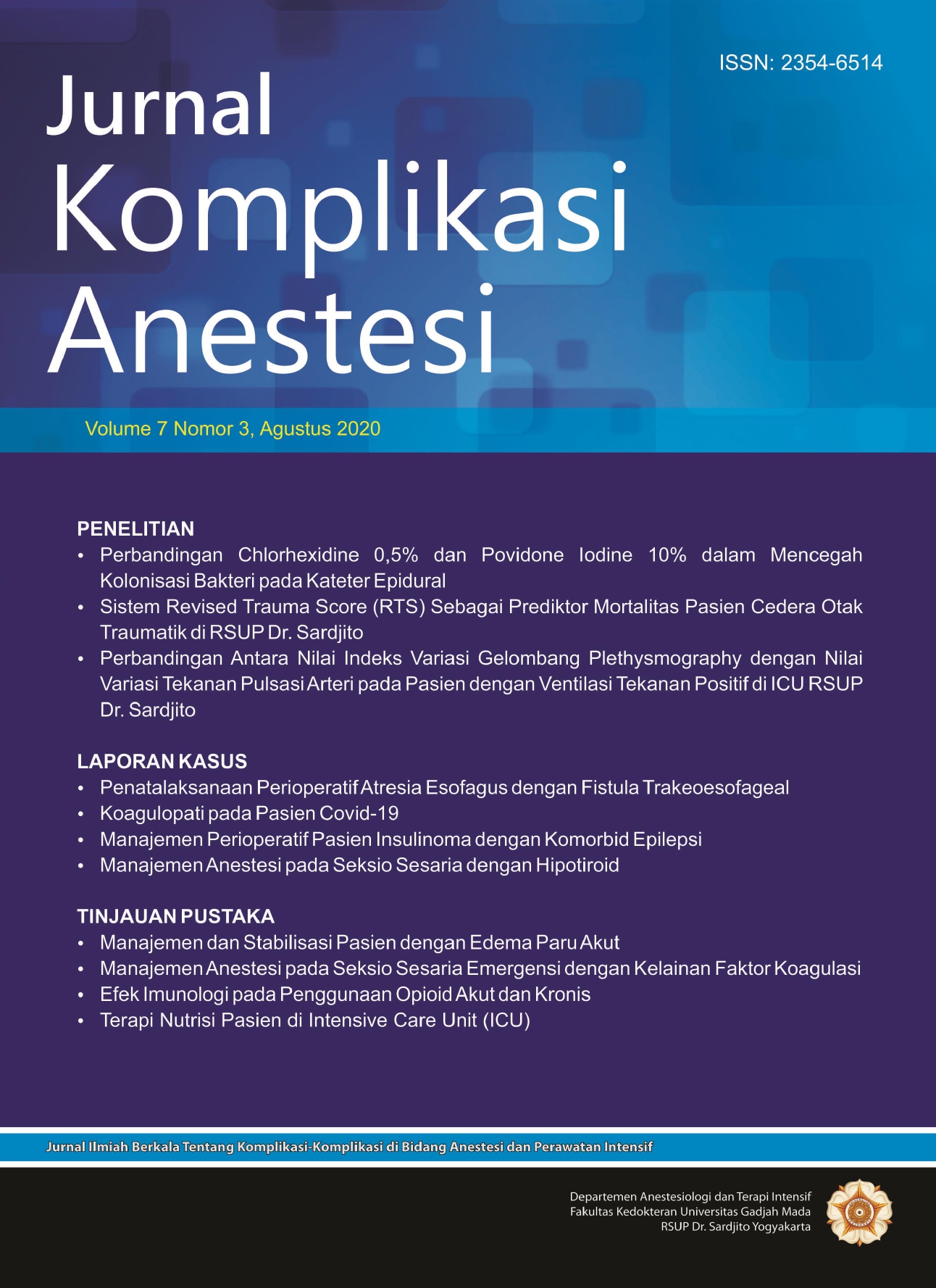Sistem Revised Trauma Score (RTS) sebagai Prediktor Mortalitas Pasien Cedera Otak Traumatik di RSUP Dr. Sardjito
Abstract
Background: Mortality predictor scores are important as prognosis tool for patients and families and to improve the quality of patient services in hospitals. RTS is easy to use and has been studied in several centers to estimate the prognosis of mortality in traumatic brain injury patients. Dr. Sardjito Hospital has never been investigated regarding the use of RTS mortality predictions in cases of traumatic brain injury. Objective: To validate the Revised Trauma Score (RTS) to predict mortality rates of traumatic brain injury patients in Dr. Sardjito General Hospital.
Method: The study was conducted in the Medical Records Installation of Dr. Sardjito General Hospital Yogyakarta by searching the data of patients who were admitted to treatment at the Dr. Sardjito with a diagnosis of traumatic brain injury from 1 January 2018 to 31 December 2018 retrospectively. The RTS prediction number used to predict the number of deaths compared to the actual death rate of the sufferer group (observed death) with the Hosmer and Lemeshow (HL) test.
Results: The number of inclusion samples in this study was 325 patients. Discrimination in this study obtained an AUC value of 0.030 (CI 95%: 0.012-0.048)]. The ability of RTS discrimination on the mortality of traumatic brain injury patients is 1-0.030 = 0.970 or 97%. With youden index, a cut of point for a significant RTS value with a mortality outcome for traumatic brain injury patients at Sardjito General Hospital 6.43 with a sensitivity value of 87% and a specificity of 94,6% and RR value of 32,73. HL test obtained p value = 0.976 (p> 0.05).
Conclusion: The Revised Trauma Score (RTS) system has a very high discrimination ability and good calibration so that the Revised Trauma Score (RTS) has a high prognosis ability in predicting the mortality of patients with traumatic brain injury at RSUP Dr. Sardjito.

Copyright (c) 2020 Aswin Wikantama, Sudadi, Yunita Widyastuti

This work is licensed under a Creative Commons Attribution-NonCommercial-ShareAlike 4.0 International License.
The Contributor and the company/institution agree that all copies of the Final Published
Version or any part thereof distributed or posted by them in print or electronic format as permitted herein will include the notice of copyright as stipulated in the Journal and a full citation to the Journal.
















